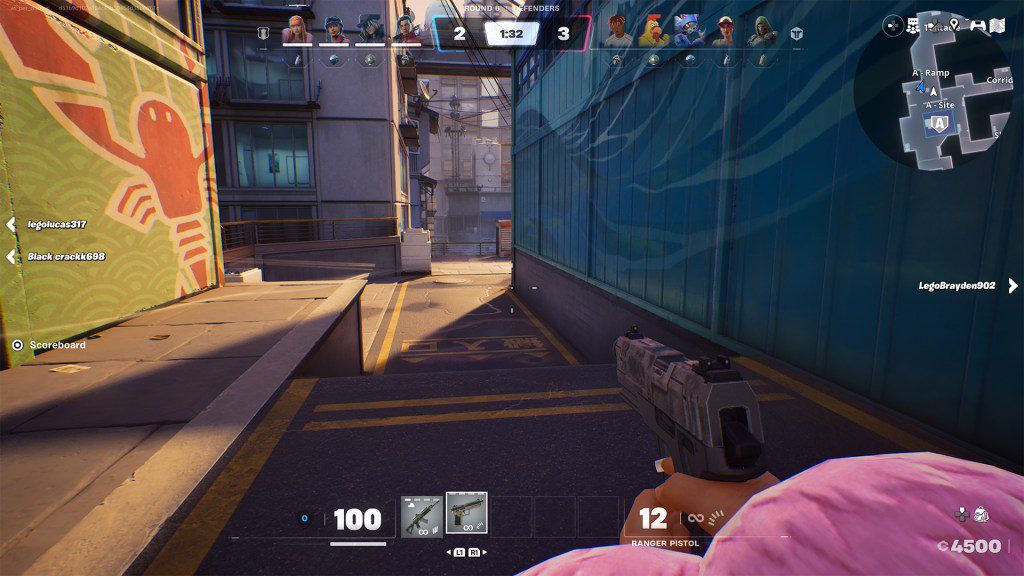The Newest ‘Fortnite’ Mode Is Just Diet ‘Counter-Strike’
Back in 2017, just over two months after Fortnite came out, it had already morphed into a different experience than what was originally intended. Initially envisioned and released as a wave-based survival shooter called Save The World, Epic Games quickly took the toolset they built and reconfigured it into a competitive 100-player battle royale experience to capitalize on the growing interest in the genre.
Now, Fortnite is an entire ecosystem, consisting of several games on one larger platform that touches on every genre under the sun. It has a battle-royale, a racing game with its Rocket Racing league, a Rock Band-like rhythm game with Fortnite Festival, and even themed experiences like a SpongeBob SquarePants set of games which released just this week. Now, Epic Games has another target in its sights with Ballistic, a competitive first-person shooter mode that leaps into the genre that esports favorites Valorant and Counter-Strike have dominated for years.
Ballistic tries to replicate that experience and does a solid job of doing so, but it feels haphazardly assembled, held together by glue and duct tape with plenty of bugs and balance issues. But, in a few years time, it will likely be a lot more impressive than the threadbare experience it is right now.
If You Can’t Beat Them, Join Them
Ballistic is Fortnite’s competitive first-person shooter mode, which is a far cry from the game’s well-known over-the-shoulder third-person perspective seen in its other modes. It sees two teams of five compete in short two-minute rounds, battling it out to either plant a bomb at one of the sites on the map or keep that bomb from being defused. Whoever does so first, or kills everyone on the other team, wins the round. First to seven round wins takes the overall victory. If that sounds familiar, it should. It’s literally Counter-Strike.
Ostensibly, the game looks and feels almost identical to Counter-Strike and Valorant (a game itself inspired by CS). You earn money for kills and round completions/wins and can then use that money to buy new weapons and gadgets like flashbangs. The limited weapons available even reflect the weapon types you can find in Counter-Strike with a high-damage, low-magazine assault rifle, a .50 Cal sniper, and more.
Fornite skins from other modes carry over to Ballistic.
Epic Games
There are even pseudo-class systems or character abilities like Valorant with Flex Gadgets that are effectively grenades, although they are extremely uninspired. These include a Proximity Mine that acts like a tripwire, a regular Frag Grenade, a Recon Grenade that will highlight enemies hiding where it lands, and a Bubble Shield that can protect you against damage briefly. The final Flex Gadget is the Impulse Grenade that can push enemies away from where it lands or be used to boost yourself across the map.
This aspect of the game has been simplified to the point where the options are often just bland. The depth and interplay these types of abilities usually offer just isn’t there, and because everything has to fit Fortnite’s homogeneous aesthetic style, they all look like regular gadgets and equipment. They don’t add any personality to the experience.
In that respect, Ballistic is blatantly just trying to be a Counter-Strike or Valorant you can play within Fortnite. It isn’t try to do anything new, but to be fair, it’s enjoyable enough for a copycat. The gunplay in the mode is solid, and the one map in the game right now looks distinct from anything you may find in the battle royale mode. Of course, that feeling is the result of seven years’ worth of refinement, but it’s still a small feat recreating the feeling of Fortnite’s shooting mechanics and physics in an entirely different format. It’s a perfectly playable competitive experience if you are deep into Fortnite’s ecosystem, but it might not keep players around.
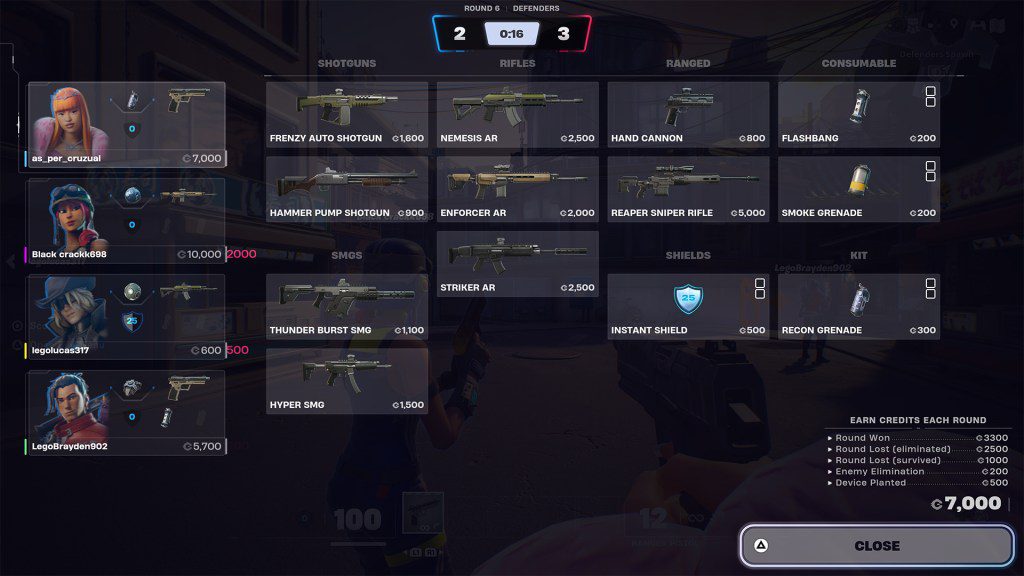
Every round begins with purchase mode, requiring strategic use of earned cash.
Epic Games
At its core, Ballistic isn’t refined or unique enough to pull players over from Counter-Strike and Valorant. With an entirely different player base, it doesn’t have that same competitive atmosphere, despite copying those games’ formula. Similarly, the gameplay isn’t high-octane enough for Fortnite players who are used to being able to teleport and zipline around a map. It will always have some players because it can easily be discovered when it sits on the Fortnite game client and main menus, but Ballistic will likely struggle to find and keep a loyal audience long-term.
Not Learning The Rules
Ballistic doesn’t play like Call of Duty or even vanilla Fortnite. Movement speed is scaled back, and gun recoil is increased substantially to focus the experience on careful team play and precise targeting that can kill opponents with a shot or two. The map is also carefully designed with only three main lanes and limited pathways to transfer between them. Already, we are seeing Fortnite’s player base struggle with the gameplay in Ballistic. Battle Royale players are used to being able to go anywhere, do anything, zipline up a building, and even teleport across a map. That isn’t the case here. You are almost always firmly rooted on the ground, which is the norm for this type of experience.
Already that shift from what Fortnite players expect from a shooter to how Ballistic actually plays is presenting some big issues. Instead of choosing a lane to push towards the bomb site as a team on offense, one or two players are choosing the opposite lane, ignoring communication. On defense, an entire team will stack on one bomb site, instead of splitting themselves amongst both of them before rotating to the site the opposing team chose to push towards. This can lose you a round as the opposing team gains complete control over an empty site.
These are normal plays and tactics for this kind of hardcore shooter, but Fortnite players don’t speak Ballistic’s language.

Ballistic plays like Valorant, where objectives must followed. It’s less of a run-and-gun type game.
Epic Games
Some players are sliding and running around, completely oblivious to the pace of the mode, which is more cautious than the hyped-up, energy drink-infused experiences within Fortnite itself, but also other shooters like Apex Legends, Call of Duty: Warzone, and Black Ops 6. Players who aren’t accustomed to the requirements of this very specific type of multiplayer shooter and the focused way it is meant to be played are just ignoring the objective and running around the map like a headless chicken trying to kill the final player who may be lurking on a point.
Sure, this is par the course for a game like Counter-Strike or Valorant whenever they’ve historically tried to make a push for new audiences, either with big updates or making the jump from PC to console. But in Fortnite Ballistic it is especially bad. The average age of Fortnite’s audience is (very) young. Its core users are years (or even decades) younger than the experienced Counter-Strike players who started in their teens or twenties when Counter-Strike 1.6 (2000) or the updated Global Offensive (2012) launched, and are still playing today. Despite competing in dozens of games through the mode’s first week, this issue doesn’t seem to be subsiding at all, even as I leveled up to higher competitive ranks.
The big caveat to enjoying Ballistic right now is that the Fortnite player base isn’t here for this type of experience, and it isn’t offering anything new or exciting to attract Counter-Strike and Valorant players. Epic Games was once at the forefront of disruptive and innovative shooter experiences, with Unreal Tournament and even OG Fortnite itself, but the company’s focus is different now.
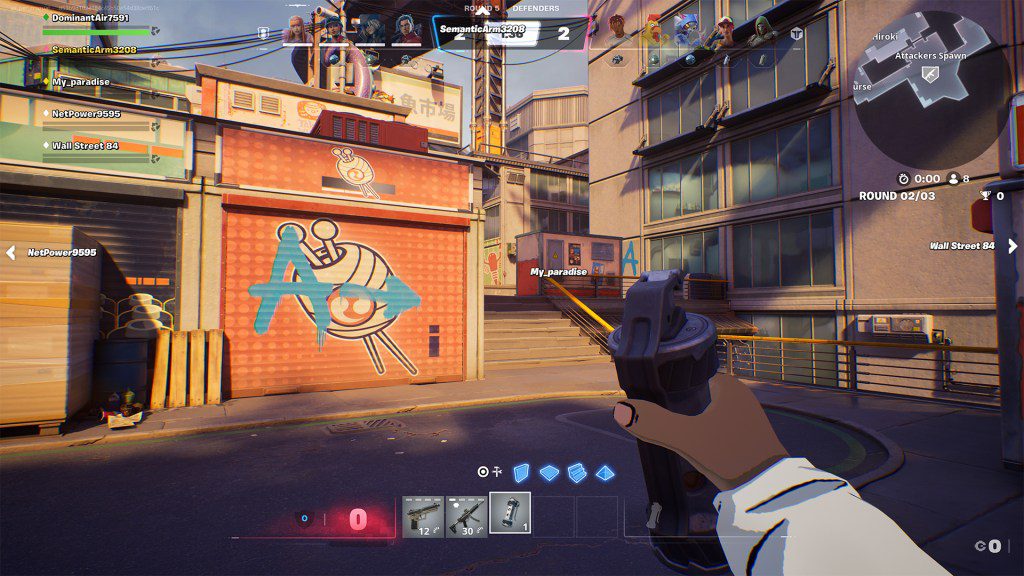
Ballistic requires coordination to plant or disarm the bomb each round.
Epic Games
Fortnite is the behemoth it is today because it fundamentally changed the rules of what a battle royale experience could be, thanks to its building gameplay that rewards improvisation. Epic did the same with live events and crossovers. Fortnite has seen in-game concerts, huge events that everyone can join in on at once in order to tell the game’s narrative, and the likes of Snoop Dogg, Master Chief, Peter Griffin, Lady Gaga, Thanos, and more added to the game as costumes. Epic redefined what was possible in a battle royale and an ever-expanding live-service game. But, with Ballistic, Epic Games has moved away from that philosophy.
Catching Up
Finally, the other main issue with Ballistic right now is that while its gameplay is solid (if unoriginal), the actual content within this mode is years behind anything else in the genre. Counter-Strike has been around for more than two decades, and Valorant has seen a steady flow of new heroes, balance tweaks, maps, and more for four and a half years.
Ballistic is launching with one map, five Flex Gadgets, and no progression or unlockable cosmetics beyond its ranked system, which works exactly the same as it does in Rocket Racing and battle-royale. There are no exclusive items or gear tied to that ranked system either, so there isn’t much incentive to climb said ranks.
Additionally, its menus look bland and dull, seemingly slapped together to make the mode playable. It doesn’t have a scintilla of the personality or visual charm Fortnite Festival and Rocket Racing did when they launched in December 2023. It might be in “Early Access,” but it really feels like “Early, Early Access,” in an undercooked sort of way.
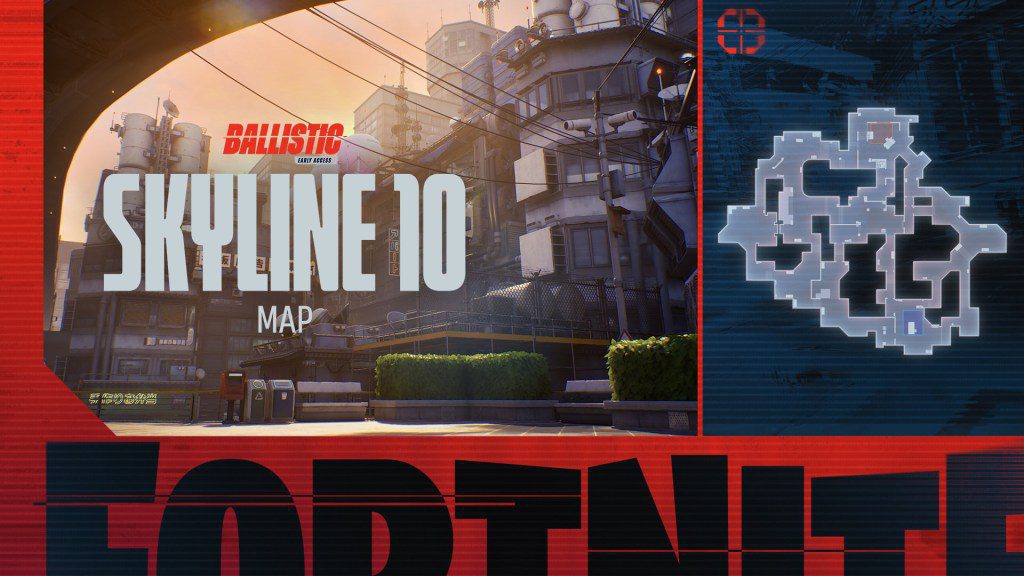
A single map might work for big battle royales, but for 5v5 gameplay, it feels anemic.
Epic Games
That feeling is only amplified by how busted and buggy the mode can be at times and some map design oversights that have been made. Disconnections are common mid-match and the join-in progress doesn’t work half the time. The consistent issues with joining and losing players mid-game exasperate the problems, which in turn cause more people to abandon their matches. During our time with the game, one or more players would leave like clockwork every other match or so, putting the team at a disadvantage. One benefit of not having any meaningful progression or ranking systems means that it doesn’t impact anything vital, but that doesn’t count as a boon.
Valorant has pretty significant penalties for players dropping out mid-game, all the way up to being banned. While there are matchmaking penalties for leaving, like having to wait a minor amount of time until you can join another Ballistic match, or seeing a rank decrease, it clearly isn’t enough of a deterrent. It is hard to see Epic Games elevating the punishments to a point where they reach that level here, as the battle royale mode doesn’t have any kind of penalty system.
Map design, while good, is also flawed. There are far too many spots where grenades and items can be thrown over walls, which feels unfair as it shifts the experience from one of chokepoints, defined corridors, and predictability to one where there is far too much chaos. Right now there is also a spot that can be used to launch yourself with the Impulse Grenade over a wall, which is the kind of game-breaking hack that would be patched out within hours in Ballistic‘s contemporaries.
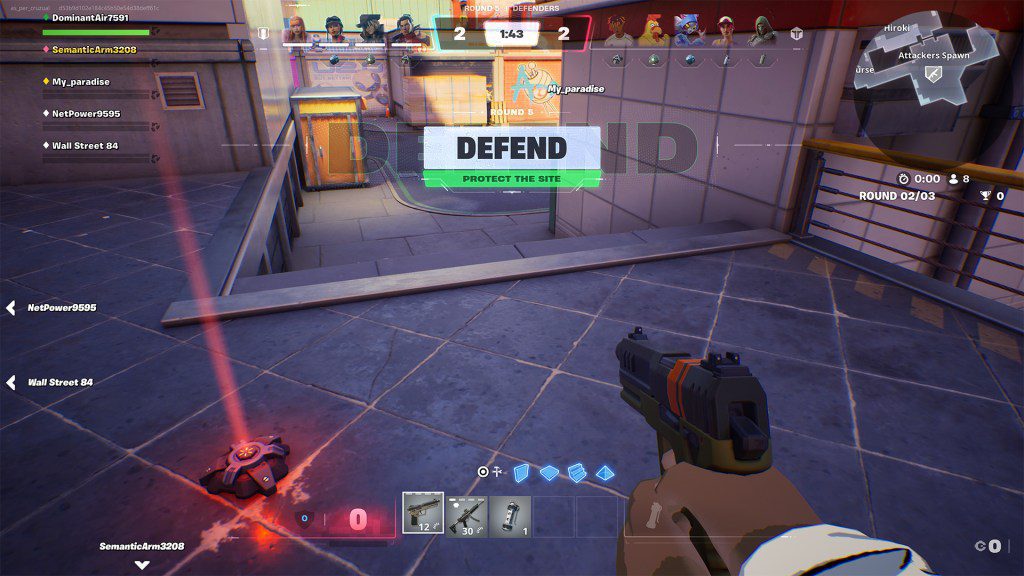
If players don’t know the flow of each round, it can be frustrating.
Epic Games
Simply put, Ballistic has way too many blemishes that dampen what could be a solid competitive experience. The mode is a pretty good replica of the best in the genre. While it’s fascinating to see what can be made within Fortnite’s toolset, it is years behind the competition and feels barebones to play right now. By the time it catches up to where Counter-Strike and Valorant are right now, those games will have evolved even further.
Through its never-ending expansion to dominate players’ time and attention, Fortnite is becoming this buffet of blandness, and Ballistic is just another part of it. Its credit, the goal of becoming a super app is being reached as it launches mode upon mode, battle pass upon battle pass. Just last week Epic also released a Grand Theft Auto V-esque roleplay game as well, called LEGO Fortnite Brick Life, on top of the LEGO survival mode, which has been live for a year.
But, for the most part, all of these experiences pale in comparison to the other games that are being aped, the ones that are the apex of their genre. Despite being an all-you-can-eat affair, the Fortnite is ultimately empty calories served up daily, lacking the depth, polish, or experience of chef’s hand Epic was known for in years past. Ballistic is just the latest example of this, and it probably won’t be the last.


